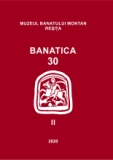Considerations on an episode of 20th century history and art of Timisoara: A case study of the Ciobanu Palace
Considerations on an episode of 20th century history and art of Timisoara: A case study of the Ciobanu Palace
Author(s): Mihaela VlăsceanuSubject(s): Architecture, Interwar Period (1920 - 1939), History of Art
Published by: Editura Mega Print SRL
Keywords: the Ciobanu Palace; Secession; Timişoara; Ferdinand Gallas;
Summary/Abstract: The province of the Banat redefining in the inter-war times meant redirecting toward the traditional values of the art originated in Europe, namely the Secession style and architecture of the last buildings elevated in full Modernism. Ciobanu Palace in Timișoara is a particular case due to Ferdinand Gallas’ low relief elements on the main front, to define identity and promote traditional values at the visual range. The subject of the Romanian peasant indicates in a didactic manner the sponsor’s affiliation to the Romanian milieu: Pompiliu Ciobanu, an advocate who took part in the Great Union in 1918 and was always backing the national cause. After Vauban fortress demolition, they built on the spot palaces emblematically representing their owners with their ethnic and cultural milieu. Built by architect Mathias Hubert between 1924 and 1926, Ciobanu Palace is such a building with identitary significance.
Journal: BANATICA
- Issue Year: 2/2020
- Issue No: 30
- Page Range: 545-552
- Page Count: 8
- Language: English

